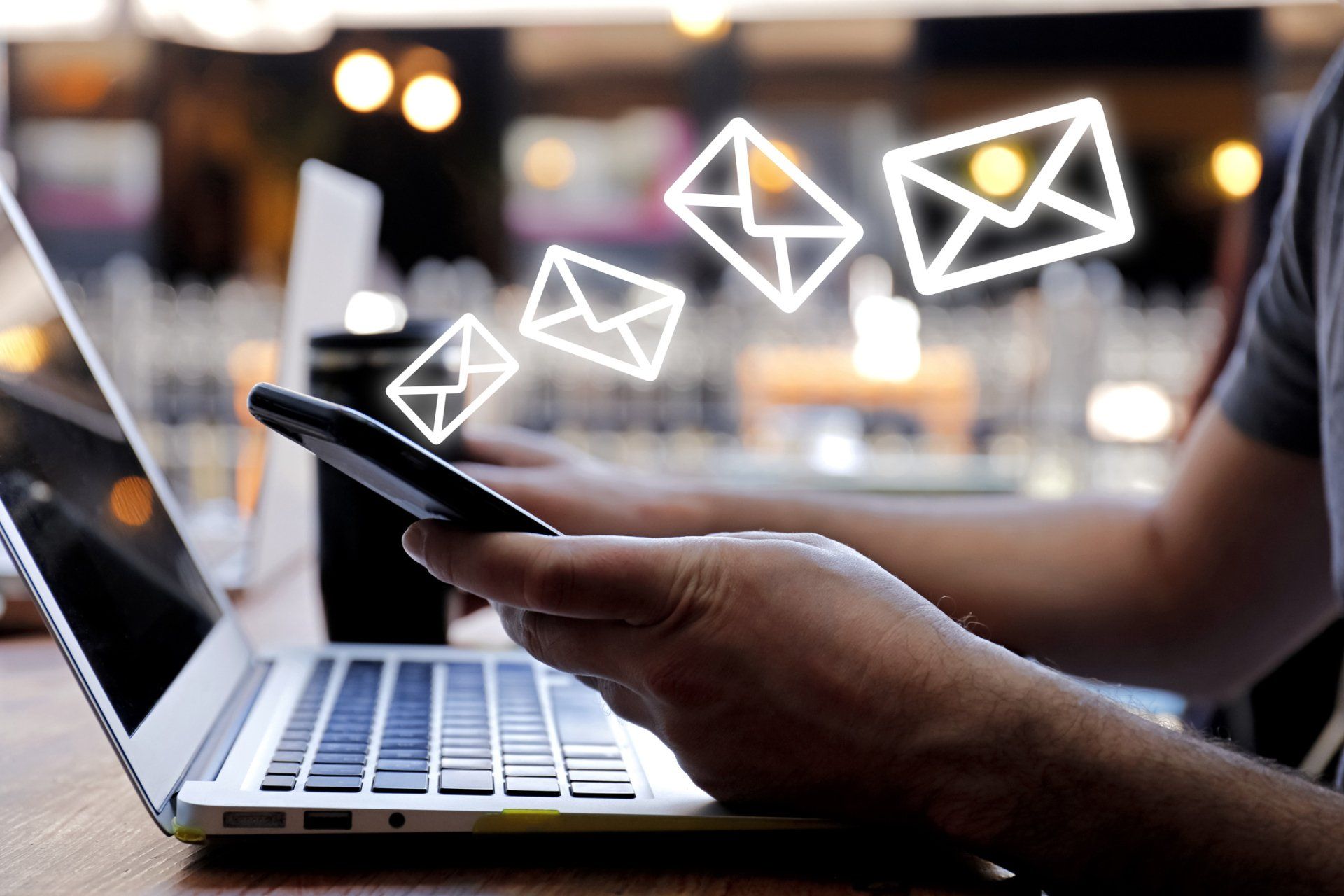Part 5: 15 ways video will turn your website into a sales superstar
Converting website visitors into sales isn’t easy, but there are plenty of steps you can take to improve the likelihood of visitors going on to become paying customers. One of the best things you can do is to use video.
When it comes to shopping online, people want to see what they are buying and know exactly how it works. Video is the best way to do this, making it more likely visitors will go ahead with a purchase, as well as increasing the time they spend on your site.
And since the start of the pandemic two years ago, video has filled the gap where conferences, networking events, in-person meetings and even a quick drink with a client used to be.
Businesses have seen cost savings, an improved carbon footprint and even a better work-life balance for employees from moving from in-person meetings to video. Why spend time and money sending staff around the country, when they can work just as effectively from the office or at home from their laptops?
These statistics from Sendspark should be enough to persuade any business to use video more:
• 91% think the pandemic has made video marketing more important than ever
• 93% of brands report getting new customers from social media videos
• 90% of customers say video marketing helps them with buying decisions
• 74% of prospects who see a product in action on video will buy it
• 30% of marketers see video as even more important to the bottom line than their website

Video can help prospective customers notice your brand in the first place, can help you nurture those prospects and help move them through your sales funnel.
But Sendspark also found that only 32% of businesses are using video for sales activities, and 41% said they aren’t making the best use of video because it’s too difficult.
Whether you are targeting a B2B or B2C audience with your videos, remember that B2B decision-makers are people too, and have a lot in common with B2C consumers.
If you’re not already using video, why not? There are really compelling reasons why all businesses, whether B2B or B2C, should embrace video on their websites.
Some key things to remember are:
• Consumers and decision-makers respond well to personalised content that shows you understand their needs and concerns
• People are more likely to open messages that stand out in a crowded inbox – and video always stands out!
• Consumers remember and recall what they see in a video far better than what they read – an incredible 95% for video compared to just 10% for reading
• It is far easier to convey emotion and create empathy with video, which helps influence a lot of buying decisions
You might think that video is expensive, but the exact opposite can be true. Not only does it have great potential to increase sales, it can also help keep costs down, as the same content can be used again and again. This is particularly useful for areas like customer service (no more time spent on the phone trying to explain how a product works!).
So whether you are already using video or are completely new to it, it is clear that it provides the opportunities you are looking for to turn your website into a sales superstar.
Keep it short
Generally speaking, it’s best to keep your videos short and make sure you grab the viewer’s attention right from the start.
A 2018 study found that 75% of B2B videos were under two minutes long. This is especially important as around a third of video viewers give up watching within 30 seconds. So stick to three or four key points at the most.
If you have more than two minutes’ worth of material, it is worth breaking it down into two (or more) separate videos about each feature or function of your product.
Repurpose your best content
You’ve probably already got the perfect content for your video, it just might not be in video form!
Think about repurposing some of your best blog posts into video. This is especially relevant because people spend so much time on mobile devices – video is much easier to consume than great blocks of text.
Add video to your homepage
Including video on your homepage and key pages throughout you site is a more engaging and eye-catching way to draw visitors’ attention to your CTAs.
As video increases dwell time, having video on your homepage and across your website means people will spend longer on your site – getting them more interested in what you have to offer and ultimately increasing sales.
Homepage videos should be well-made and professional, but not overwhelming – make sure people can see the rest of your page too!
Post to YouTube
It’s important to host your videos on your own site, but if you really want to get them noticed, post them to YouTube.
YouTube is the second most-visited website in the world and you can also use it as a place to host your video when embedding it on your website.
Optimise your videos
If you are posting your videos to YouTube, you will have lots of tough competition. To help your video stand out, take the time to optimise it.
It’s important to use keywords (or tags) in your title and description (such as your brand name, a product description, your industry and your location). Your first tag should be the exact keyword you want to rank for, then your next tags should be variations of that keyword, followed by a couple of broader terms, like ‘fitness’ and ‘workouts’.
Tags are designed to help YouTube understand your content – so too many tags makes it confusing. Stick to five to eight of the most relevant tags.
Then create an engaging thumbnail, which makes people want to watch and find out more.
Make it accessible
Not everyone can hear very well and not everyone speaks your language, but you still want them to watch and understand your videos. Subtitles and closed captions are easy to add and can make a big difference in terms of accessibility.
In addition, lots of people like to watch videos on silent anyway – so that they don’t disturb their colleagues, sleeping children or the other passengers on a crowded train!
Make it shareable
The best way to get your videos seen by lots of people is by making them shareable on social media. The most shareable videos will be those which tell a story, tug on the heartstrings or make us laugh. The least shareable will be those which come across as a hard sell.
To ensure your videos really are shareable, make sure they conform to the criteria of the social media channel you want them to be shared on eg Instagram.
Be yourself
Your business was created by you. You want it to come across in a way which is trustworthy and authentic. You might want it to appear professional or you might want it to appear fun, but you should always be yourself on video. Too stiff and formal and you will turn people off.
But however informal your video, it is important to prepare what you’re going to say and say it well, but it shouldn’t sound like you are reading from a script.
Relax, make eye contact and smile, just as you would if you were meeting a customer in real life. You might be speaking to thousands of people, but a good video message should feel personal and create rapport.
Great for SEO
Think SEO is all about words? Think again! Video is fantastic for SEO.
Having a video on your site can increase the amount of time a visitor spends there. This is known as dwell time and it is believed to help with Google ranking.
Research by Forrester found it is 53 times easier to get video content on page one of Google than any other content type.
Use for the top of your sales funnel
Video marketing is ideal for getting people interested in your brand or products at the top of your sales funnel.
One top of funnel strategy becoming increasingly popular with B2B marketers is the video sales letter. The way to do this is record a video looking at the problems or jobs your target audience has, then showing how your technique/ product/ service can make them better.
Sharing the video sales letter on your website and social media, as well as by email, means it can be seen by potentially thousands of people. Anyone who watches the full video and then clicks your CTA is ready to move through your sales funnel and genuinely interested in buying from you.
Getting started videos
Video marketing doesn’t stop at the top of the sales funnel. It offers some real advantages further down the funnel too.
Video is the ideal medium for introducing and demonstrating products to new audiences, either on your website or over social media. It can help persuade sceptical visitors that a product or service really does do all the things you promise it can.
By showing customers or potential customers a video that talks them through the initial getting started process, you can remove any friction or frustration which may prevent them from making a purchase or from making the best of your product.
Helpdesk videos
Common helpdesk solutions can be videoed and shared with any users experiencing difficulties - saving your customer service staff’s time and making the solutions easier to follow and understand for users.
Video lets you educate and train users on common problems without anyone being there in person, and the material can be used over and over again.
This is especially useful for B2B services, which can be complex for new users.
Story videos
People are often interested in the backstory of a business or product, and video is a great way to tell that story.
Talk about your inspirations, introduce the team, even show a few things which went wrong along your journey to bring your business to life and make it something visitors can relate to.

Use email
Video email is particularly helpful for B2B email marketing. Importantly, according to Sendspark, video emails have 43% higher open rates than standard emails, and video thumbnails get 65% more clicks than other media in emails.
They are a great way to introduce yourself and your business to potential customers. You can use the video for multiple contacts, but it still feels personal, especially if you personalise the email text.
You can also use email to nurture leads (as part of a drip campaign) with existing video content, such as webinars, customer testimonials and Q&As.
Use LinkedIn
Around 75 million senior B2B decision-makers are LinkedIn users, which makes LinkedIn an essential part of effective B2B marketing, and video plays a key part in that.
LinkedIn posts containing video generate 98% more engagement than non-video posts. The platform gives priority to ‘native video’ – content you’ve uploaded direct to LinkedIn, rather than embedded links.
Personalised videos
For high-end consumer goods or big B2B contracts, it is worth spending the time on creating a personalised video aimed specifically at that customer or potential customer.
These videos really make your customer feel valued and can give you the edge over a competitor.
(You can always edit pre-existing content into your personalised video to save some time and money.)
Shoppable links
If you are using video to advertise your products on social media, make it even easier to buy with shoppable links. People can purchase your products directly from the video without going through your website – they just click and buy straight from your social media.
Include a CTA
As with all the other tools in your sales funnel, it is essential to include a call-to-action (CTA) in your video. There’s no point investing time and money in a great video for people to enjoy, if you don’t remind them of what you want them to do next.
A CTA can either be spoken or an on-screen caption.
Webinars
Webinars are a great way to show that you know your stuff and demonstrate the solutions you can provide, while also collecting visitors’ contact details.
If you record the webinar and host it on your site behind a registration form it makes an excellent evergreen lead magnet.
Video testimonials
Customer reviews are always powerful for potential customers, but video testimonials are even more convincing. Seeing a real person talk about their experience with your product, service or brand has real impact on a viewer.
There is no doubt that using video is essential for engaging visitors and ultimately transforming your website into a sales superstar. Video offers so many benefits from improved Google rankings to longer dwell times and improved engagement with your audience. If you aren’t using it yet, you are missing out!
As we have shown, there are many ways of using video and it is important to work out what works best for your brand, your products or services and especially your audience. Whether your brand is completely new to video or you are working to improve your video offer, it is important to track what works and what doesn’t.
Do social media shopping links work well or do people turn off your YouTube videos before they get to your key message? Focus on doing more of what works well and improving or getting rid of the areas which don’t, and see what a difference video can make to your sales.

More Posts.


Cotswold Web Services.





